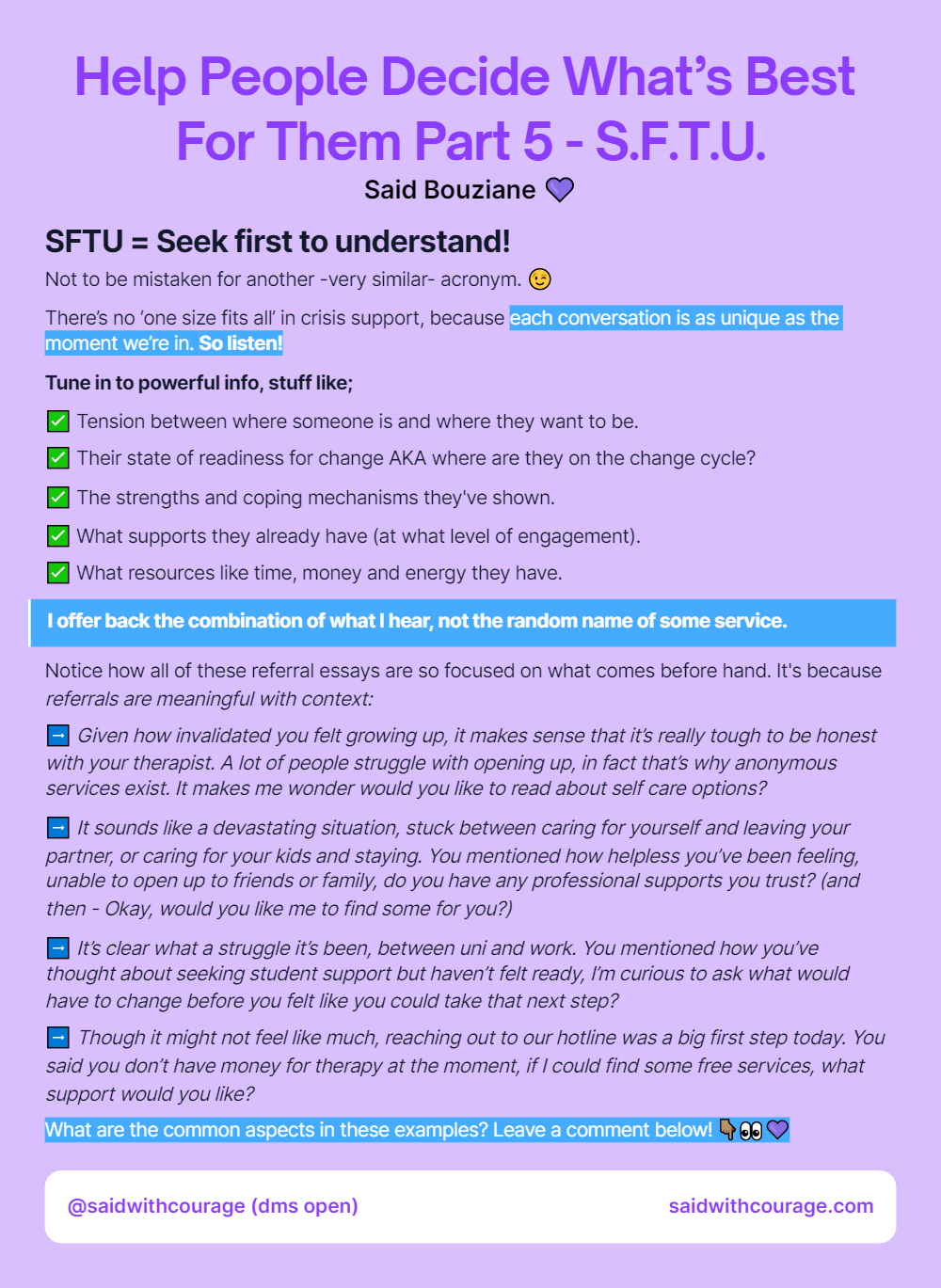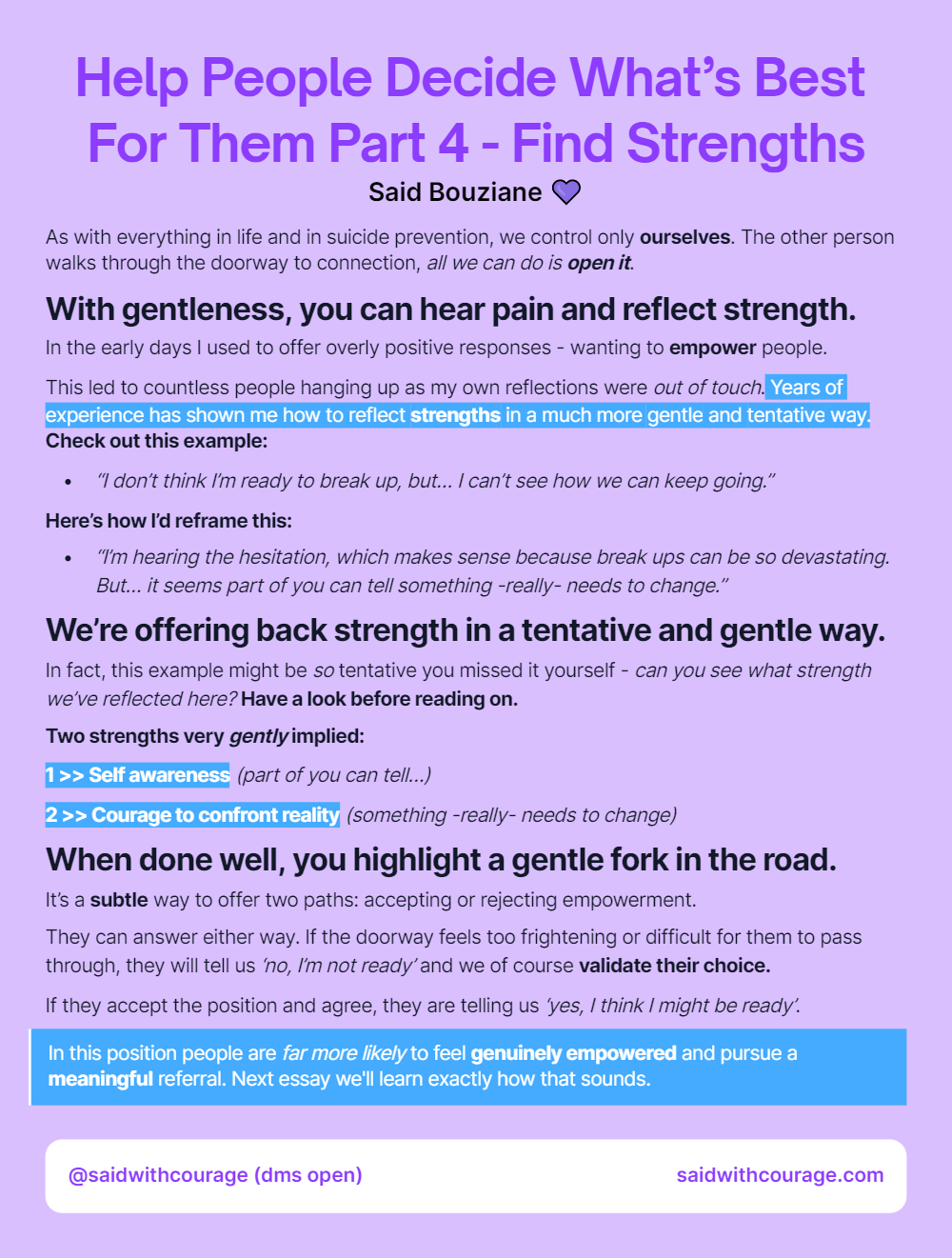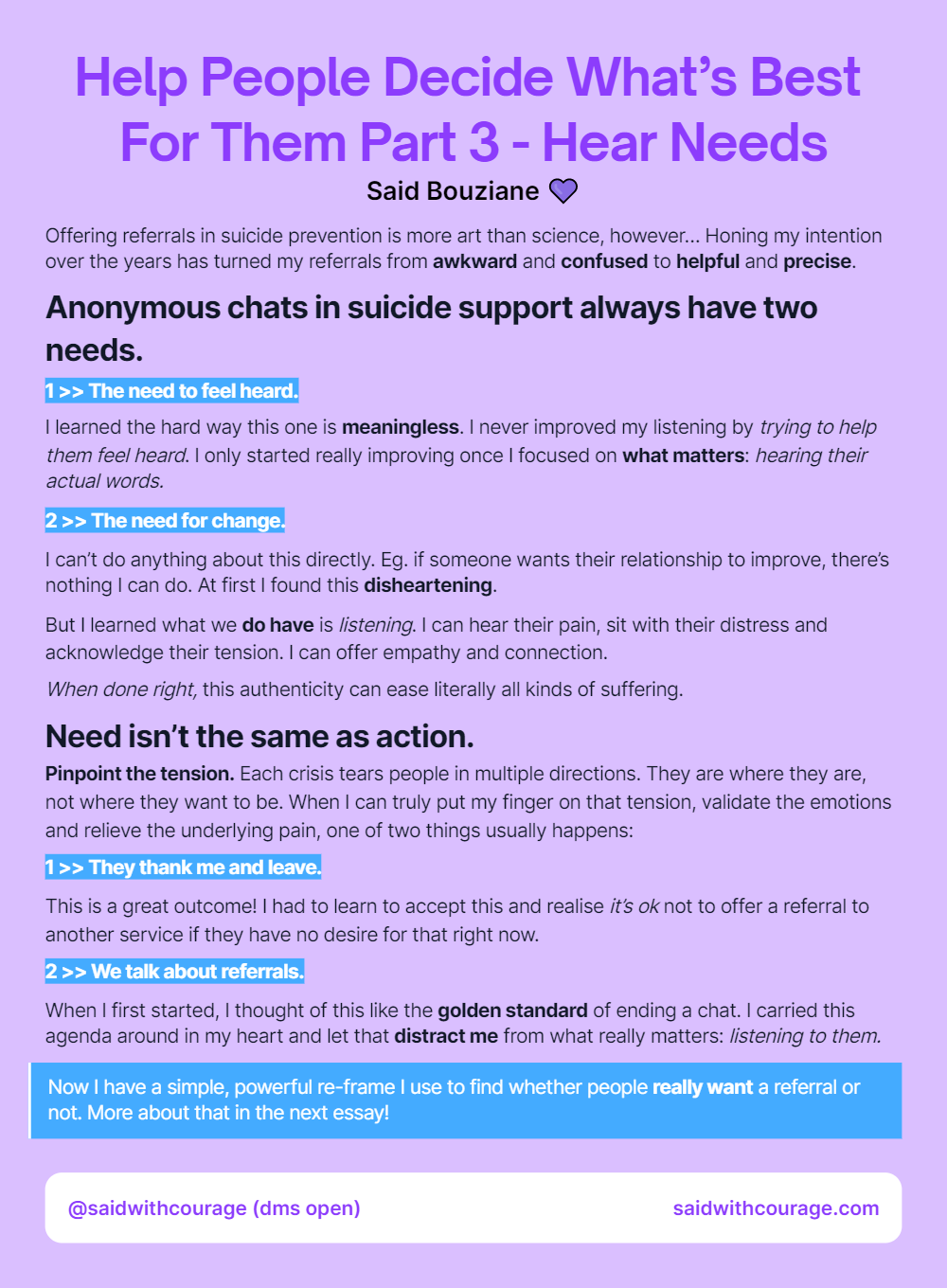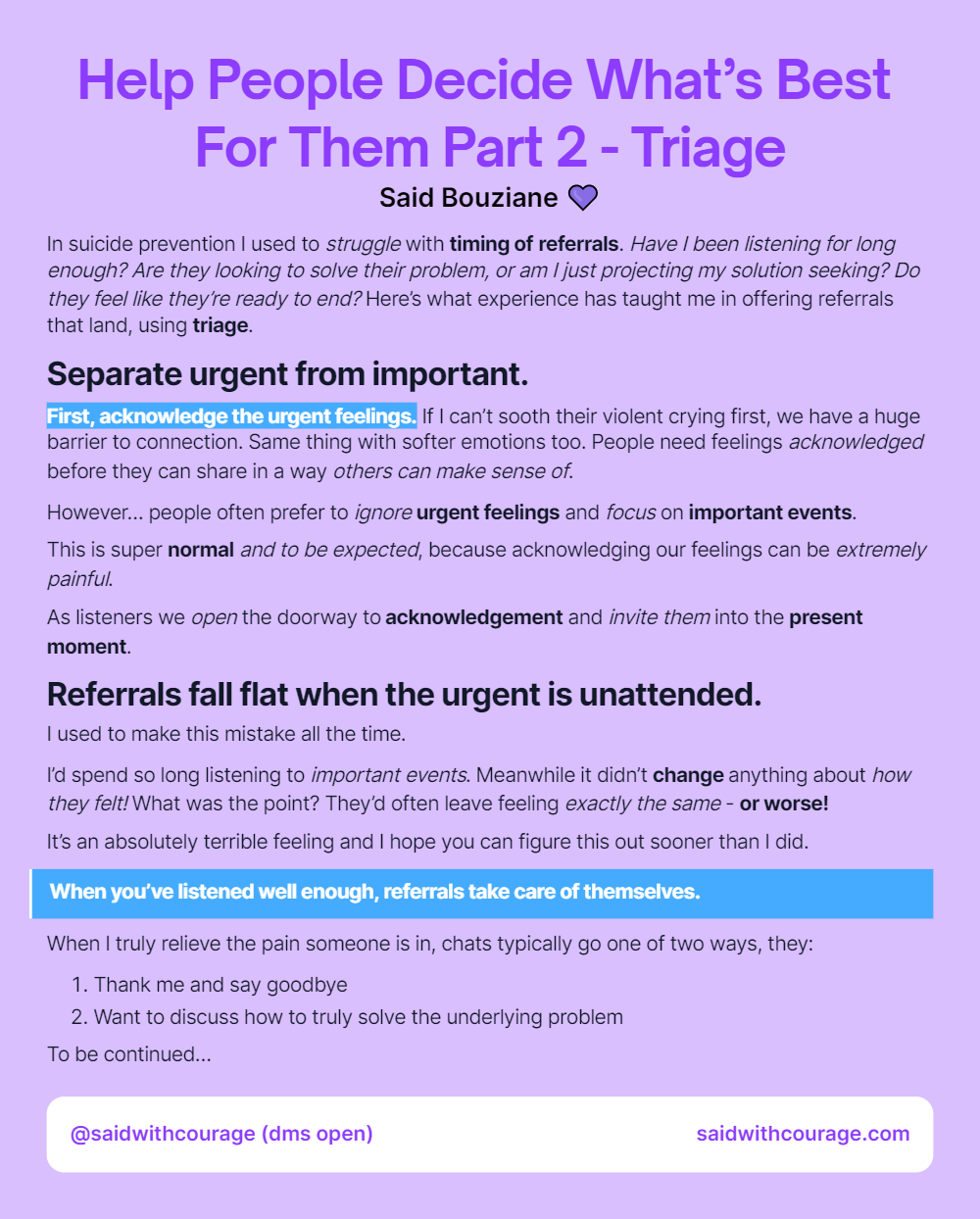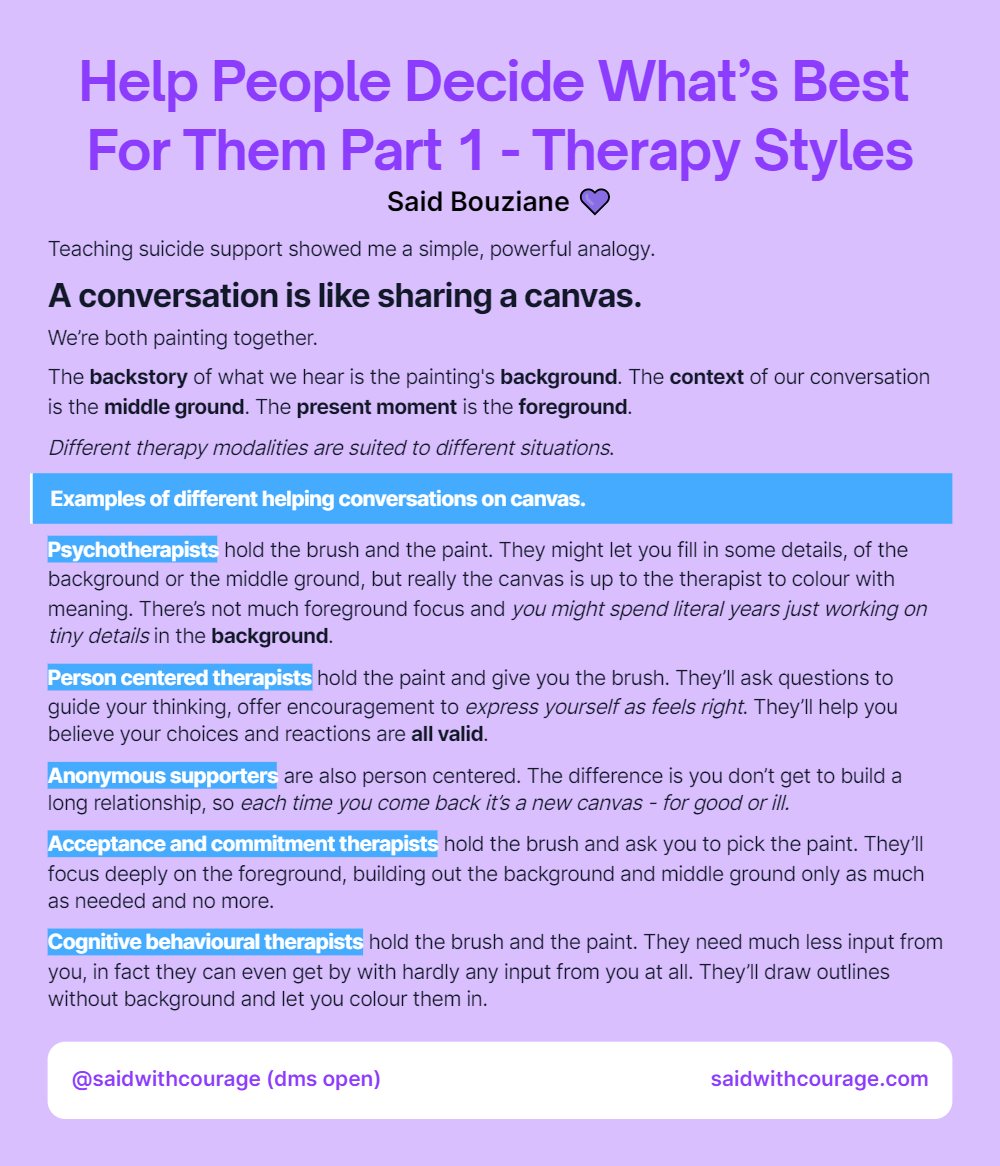-
Help People Decide What’s Best For Them Part 6 – Recap
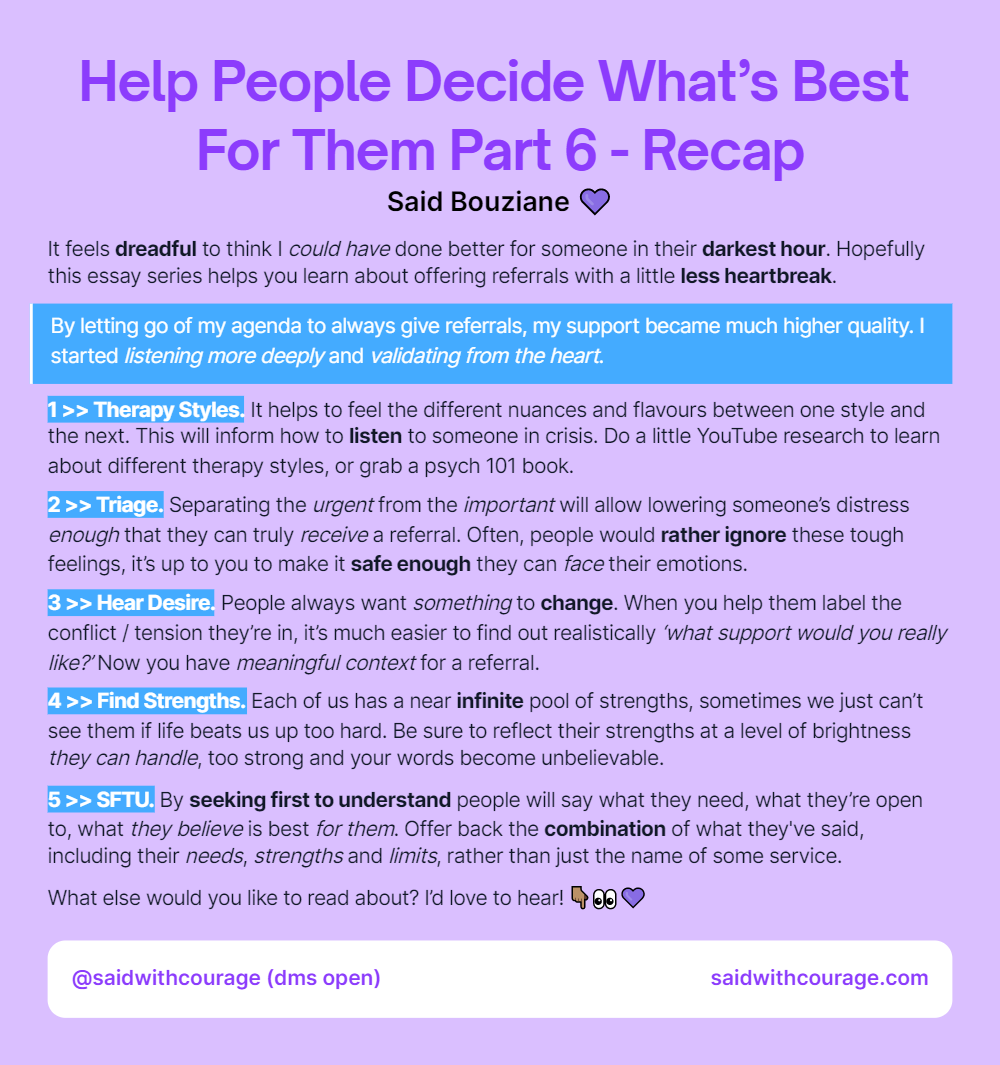
It feels dreadful to think I could have done better for someone in their darkest hour. Hopefully this essay series helps you learn about offering referrals with a little less heartbreak. By letting go of my agenda to always give referrals, my support became much higher quality. I started listening more deeply and validating from…
-
Help People Decide What’s Best For Them Part 5 – SFTU

SFTU = Seek first to understand! Not to be mistaken for another -very similar- acronym. 😉 There’s no ‘one size fits all’ in crisis support, because each conversation is as unique as the moment we’re in. So listen! Tune in to powerful info, stuff like; ✅ Tension between where someone is and where they want…
-
Help People Decide What’s Best For Them Part 4 – Find Strengths

As with everything in life and in suicide prevention, we control only ourselves. The other person walks through the doorway to connection, all we can do is open it. With gentleness, you can hear pain and reflect strength. In the early days I used to offer overly positive responses – wanting to empower people. This…
-
Help People Decide What’s Best For Them Part 3 – Hear Needs

Offering referrals in suicide prevention is more art than science, however… Honing my intention over the years has turned my referrals from awkward and confused to helpful and precise. Anonymous chats in suicide support always have two needs. 1 >> The need to feel heard. I learned the hard way this one is meaningless. I…
-
Help People Decide What’s Best For Them Part 2 – Triage

In suicide prevention I used to struggle with timing of referrals. Have I been listening for long enough? Are they looking to solve their problem, or am I just projecting my solution seeking? Do they feel like they’re ready to end? Here’s what experience has taught me in offering referrals that land, using triage. Separate…
-
Help People Decide What’s Best For Them Part 1 – Therapy Styles

Teaching suicide support showed me a simple, powerful analogy. A conversation is like sharing a canvas. We’re both painting together. The backstory of what we hear is the painting’s background. The context of our conversation is the middle ground. The present moment is the foreground. Different therapy modalities are suited to different situations. Examples of…

